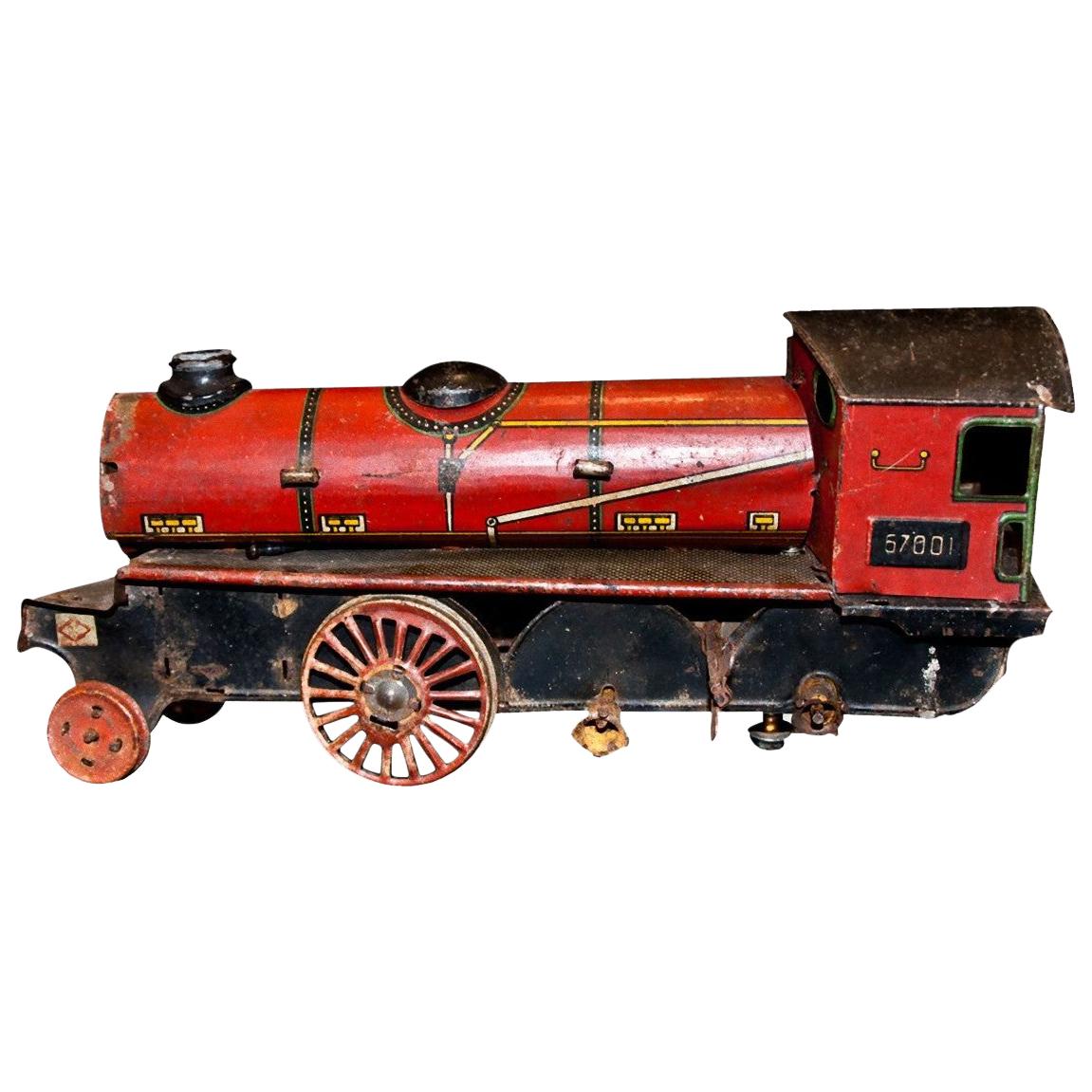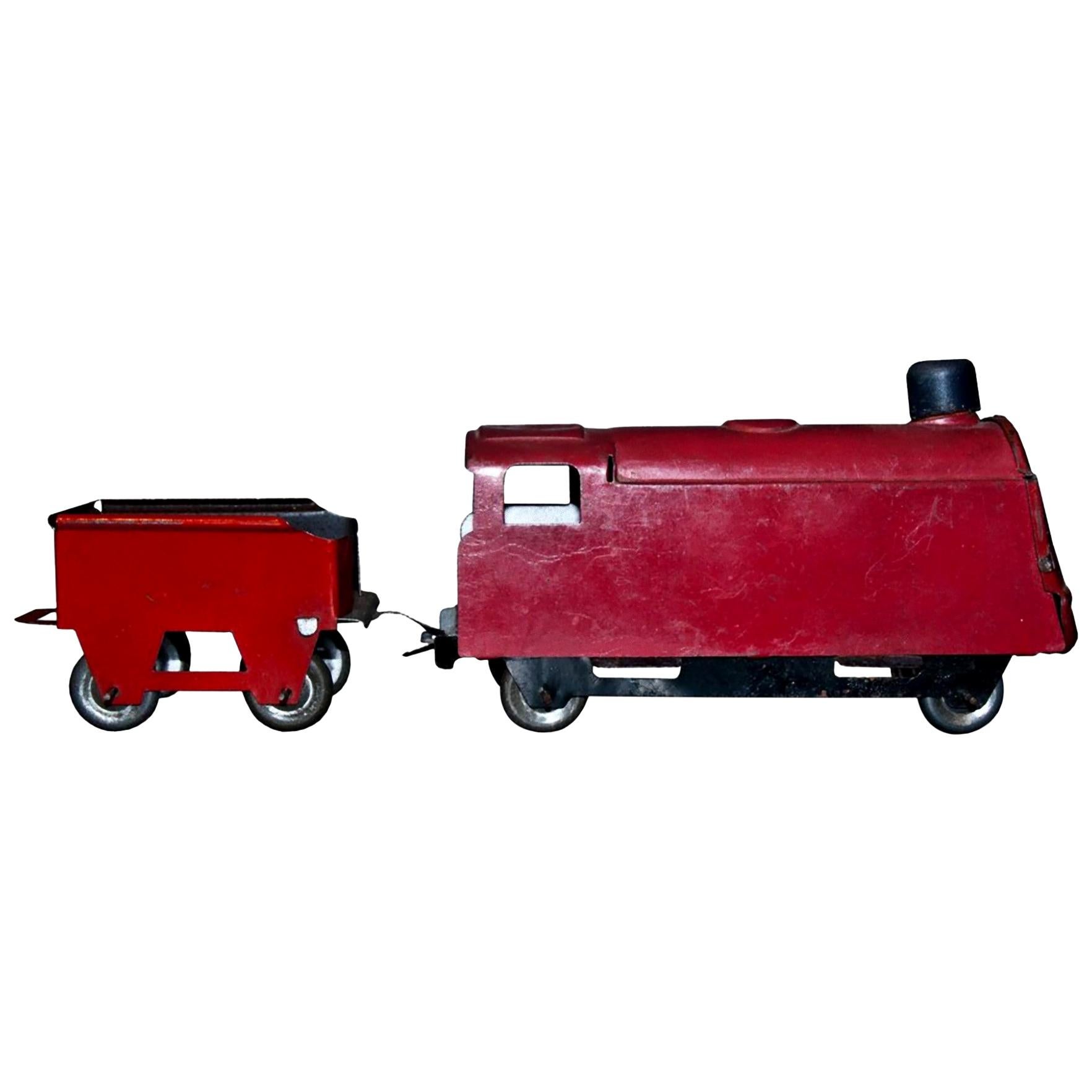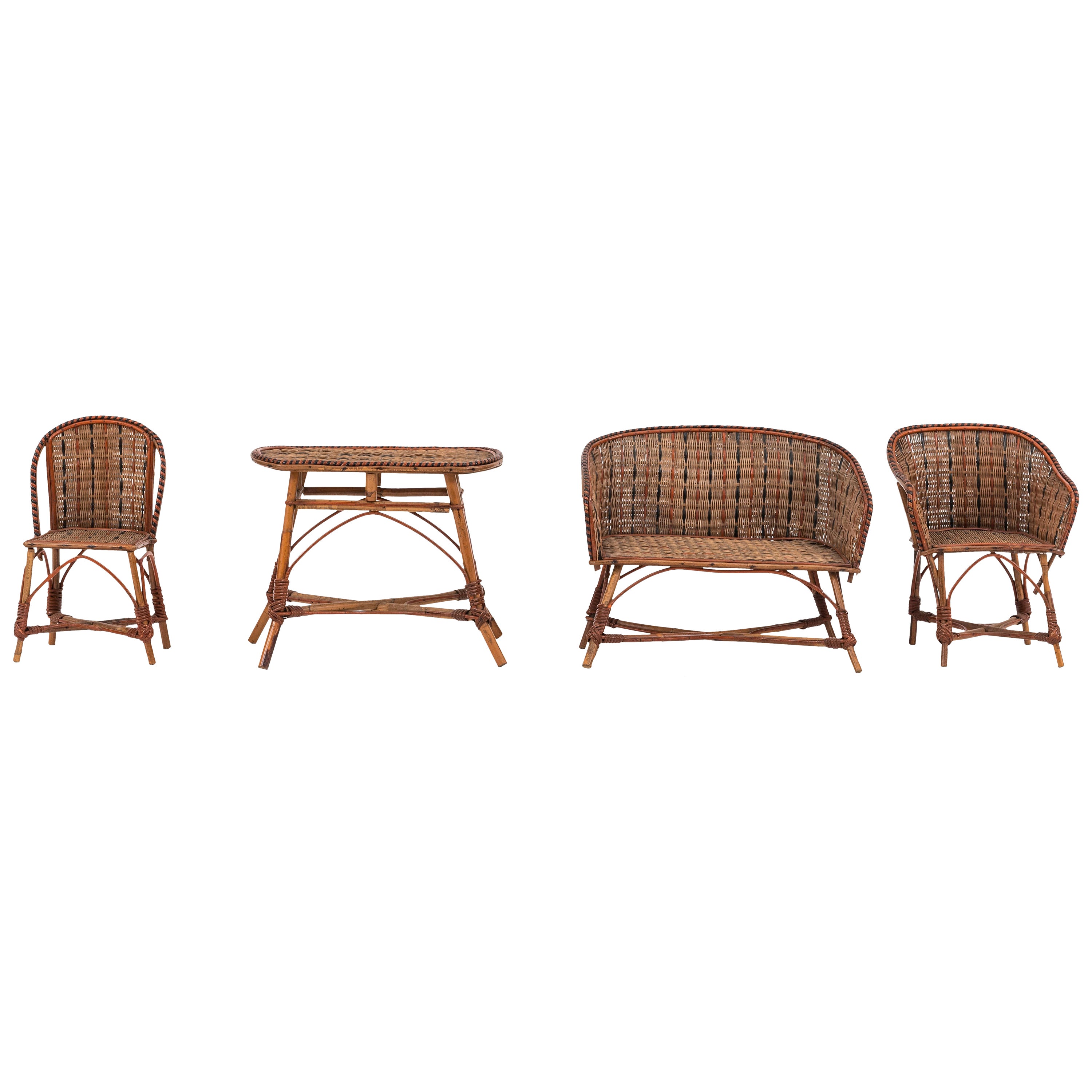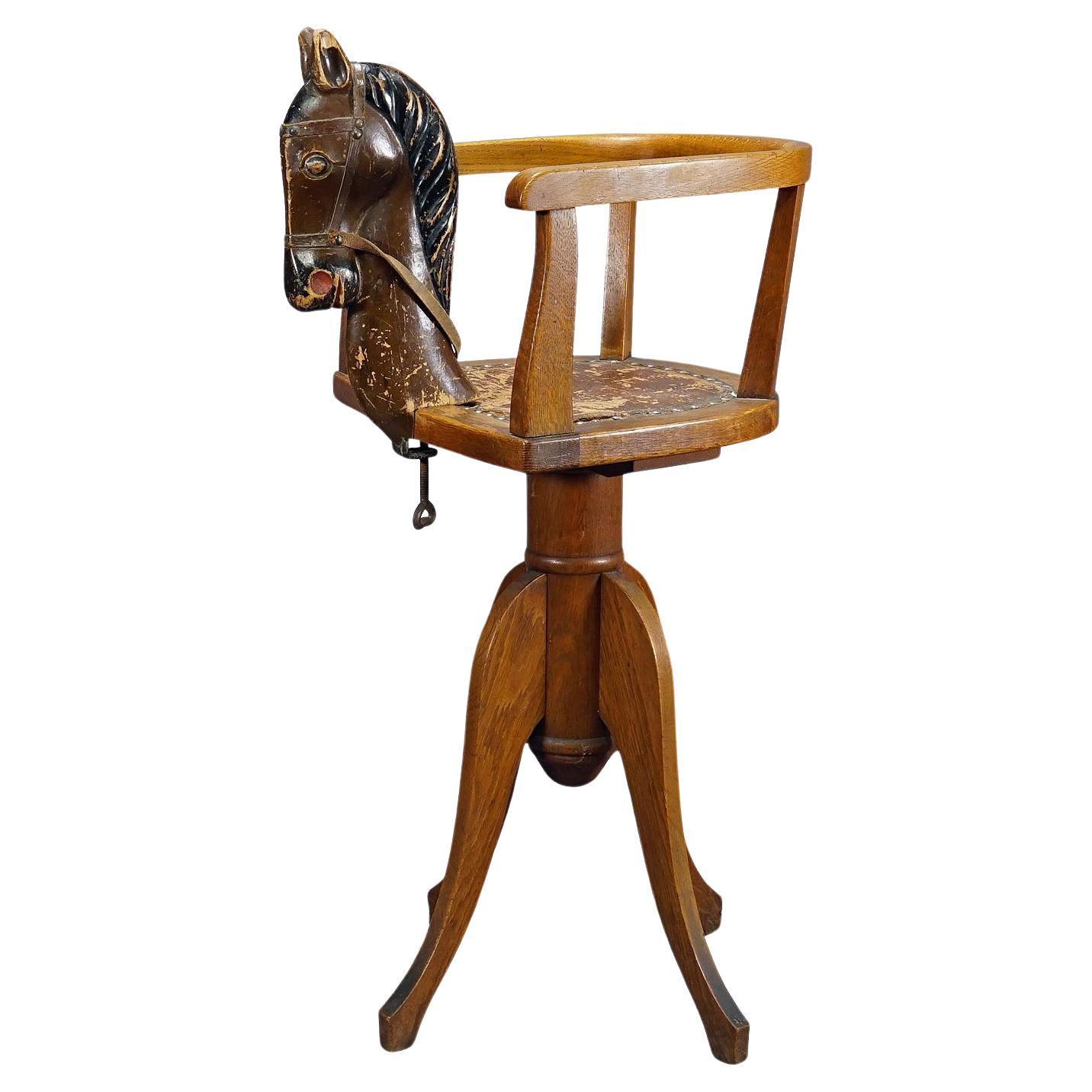Items Similar to 16 piece miniature modernist furniture set, Netherlands 1920s
Want more images or videos?
Request additional images or videos from the seller
1 of 11
16 piece miniature modernist furniture set, Netherlands 1920s
About the Item
Set of 16 highly original miniature furniture. It consist of a dining table with 4 chairs, 2 beds with night stands and an occasional chair an a living room set with a sofa, 2 chairs, 2 side tables and a coffee table.
Bauhaus modernist style construction.
The Staatliches Bauhaus, commonly known as the Bauhaus (German for 'building house'), was a German art school operational from 1919 to 1933 that combined crafts and the fine arts. The school became famous for its approach to design, which attempted to unify individual artistic vision with the principles of mass production and emphasis on function. Along with the doctrine of functionalism, the Bauhaus initiated the conceptual understanding of architecture and design.
The Bauhaus was founded by architect Walter Gropius in Weimar. It was grounded in the idea of creating a Gesamtkunstwerk ("comprehensive artwork") in which all the arts would eventually be brought together. The Bauhaus style later became one of the most influential currents in modern design, modernist architecture, and architectural education. The Bauhaus movement had a profound influence on subsequent developments in art, architecture, graphic design, interior design, industrial design, and typography. Staff at the Bauhaus included prominent artists such as Paul Klee, Wassily Kandinsky, Gunta Stölzl, and László Moholy-Nagy at various points.
The school existed in three German cities—Weimar, from 1919 to 1925; Dessau, from 1925 to 1932; and Berlin, from 1932 to 1933—under three different architect-directors: Walter Gropius from 1919 to 1928; Hannes Meyer from 1928 to 1930; and Ludwig Mies van der Rohe from 1930 until 1933, when the school was closed by its own leadership under pressure from the Nazi regime, having been painted as a centre of communist intellectualism. Internationally, former key figures of Bauhaus were successful in the United States and became known as the avant-garde for the International Style.
The changes of venue and leadership resulted in a constant shifting of focus, technique, instructors, and politics. For example, the pottery shop was discontinued when the school moved from Weimar to Dessau, even though it had been an important revenue source; when Mies van der Rohe took over the school in 1930, he transformed it into a private school and would not allow any supporters of Hannes Meyer to attend it.
- Similar to:Le Corbusier, Pierre Jeanneret, Charlotte Perriand Cassina (Designer)
- Dimensions:Height: 1.97 in (5 cm)Width: 6.3 in (16 cm)Depth: 2.37 in (6 cm)
- Style:Modern (Of the Period)
- Materials and Techniques:
- Place of Origin:
- Period:
- Date of Manufacture:1920-1930
- Condition:Wear consistent with age and use. Minor losses. No structural issues. Wear on the edges and some chips of paint are missing. Consistent with age and use.
- Seller Location:ECHT, NL
- Reference Number:1stDibs: LU9426237321902
About the Seller
New to 1stDibs
Joined in the past six months.
5.0
Gold Seller
These expertly vetted sellers are highly rated and consistently exceed customer expectations.
1stDibs seller since 2023
5 sales on 1stDibs
Typical response time: 6 hours
- ShippingRetrieving quote...Ships From: ECHT, Netherlands
- Return PolicyA return for this item may be initiated within 14 days of delivery.
More From This SellerView All
- Constructivist plywood rocking horse, Switzerland 1960sBy Kay BojesenLocated in ECHT, NLMinimal Bauhaus design rocking horse. It is made from sheets of plywood. Simple yet ingenious construction making it a sturdy toy. I was made during the 1960s in Switzerland. The pl...Category
Mid-20th Century Swiss Bauhaus Toys
MaterialsPlywood
- Set of 6 brutalist wood and papercord dining chairs, Netherlands 1960sBy Le Corbusier, Pierre Jeanneret, Charlotte Perriand CassinaLocated in ECHT, NLSet of 6 solid wood dining chairs. Designed in the style of Charlotte Perriand and Pierre Jeanerette. The seats are handwoven with papercord. The chairs have some signs of wear consi...Category
Mid-20th Century Dutch Brutalist Chairs
MaterialsPapercord, Wood
- Extra large modernist solid wood bench, Netherlands 1960sLocated in ECHT, NLLarge modernist bench. Made from solid wood. The bench consists of two halves that are joined together with wood dowels and 2 large metal bolts. They can also be used as 2 separate s...Category
Mid-20th Century Dutch Modern Benches
MaterialsWood
- Modernist living room set in the manner of Gerrit Rietveld, Netherlands 1950sBy Metz & Co., De Stijl, Walter Gropius, Gerrit RietveldLocated in ECHT, NLHandcrafted living room or patio set. It is made in the style of Gerrit Rietveld and is clearly inspired by his legendary "kratstoel" or "crate chair" where difference lies in the amount of slats in the seat and back. This set was made during the 1950s and is entirely made from pine and assembled using round headed screws that are recessed in the wood. Made with great eye for detail. The set consists of 2 two-seater sofas and 1 lounge chair. Dimensions sofa: W. 130cm H. 70cm D. 75cm Dimensions chair. W. 75cm H. 70cm D. 75cm Seat height: sloping back from 33 to 27cm Armrest height: 52cm De Stijl (Dutch for "The Style"), also known as Neoplasticism, was a Dutch art movement founded in 1917 in Leiden. De Stijl consisted of artists and architects. In a more narrow sense, the term De Stijl is used to refer to a body of work from 1917 to 1931 founded in the Netherlands. Proponents of De Stijl advocated pure abstraction and universality by a reduction to the essentials of form and colour; they simplified visual compositions to vertical and horizontal, using only black, white and primary colors. De Stijl is also the name of a journal that was published by the Dutch painter, designer, writer, and critic Theo van Doesburg that served to propagate the group's theories. Along with van Doesburg, the group's principal members were the painters Piet Mondrian, Vilmos Huszár, Bart van der Leck, and the architects Gerrit Rietveld, Robert van 't Hoff, and J. J. P. Oud. The artistic philosophy that formed a basis for the group's work is known as Neoplasticism—the new plastic art (or Nieuwe Beelding in Dutch). According to Theo van Doesburg in the introduction of the magazine De Stijl 1917 no.1, the "De Stijl"-movement was a reaction to the "Modern Baroque" of the Amsterdam School movement (Dutch expressionist...Category
Mid-20th Century Dutch De Stijl Living Room Sets
MaterialsPine
- Antique iron wall lamp with bells, 1920sLocated in ECHT, NLUnique hammered iron wall lamp with bells. Intended for mounting above a door and fulfilling two functions. Illuminating the doorway and as a doorbell. The door would hit the bells a...Category
Early 20th Century Indonesian Wall Lights and Sconces
MaterialsIron
- Set of 2 Mobach ceramic table lamps, Netherlands 1960sBy Piet Knepper, MobachLocated in ECHT, NLSet of 2 ceramic table lamps. Probably designed by Piet Knapper and manufactured by the Mobach ceramic studio. The lamps are made from ceramic and glazed in blueish gray. The texture...Category
Mid-20th Century Dutch Brutalist Table Lamps
MaterialsCeramic
You May Also Like
- Antique Fireman from a Children's Carousel, Germany 1920sLocated in Berghuelen, DEAntique Fireman from a Children's Carousel, Germany 1920s An antique wooden sculpture of a fireman. Formerly used as decoration for the fire engine of a Bavarian children's carousel...Category
Early 20th Century German Victorian Figurative Sculptures
MaterialsWood
- French Sales Sample Miniature Wicker Salon SetLocated in New York, NYFrench (1930's) miniature salesman's sample model of natural wicker 4 piece salon set with orange and black trim.Category
20th Century French Mission Toys
MaterialsWicker
- Antique Barber Chair for Children, Germany ca. 1920sLocated in Berghuelen, DEAntique Barber Chair for Children, Germany ca. 1920s An antique barber shop children chair. With rotatable height adjustment and a wooden horse head which is attached to the front o...Category
Early 20th Century German Victorian Chairs
MaterialsWood, Leather
- Original Vintage Toy, Small Train and Trailer, 1920sLocated in Roma, ITThis small train and trailer is an original vintage toy. This vintage toy train and its trailer was maybe part of a bigger set. Unknown man...Category
Early 20th Century German Toys
MaterialsMetal
- Large Terracotta Garden Gnome with Pipe, Germany ca. 1920sLocated in Berghuelen, DELarge Terracotta Garden Gnome with Pipe, Germany ca. 1920s A large garden gnome from Germany, ca. 1920s. The gnome has a pipe and an walking stick in his hands. Good used vintage co...Category
Early 20th Century German Victorian Figurative Sculptures
MaterialsTerracotta
- Vintage Toy, Wind up Locomotive Ingap 67001, Made by Ingap, 1920sLocated in Roma, ITThis wind up locomotive Ingap 67001 is a vintage toy representing a red mechanical locomotive. Made in tin by Ingap, model n. 67001. Probably made in 1920s. 3 wheels missing, me...Category
Early 20th Century Italian Toys
MaterialsMetal
Recently Viewed
View AllMore Ways To Browse
Germany Santa Face Ornament
Vintage Plastic Model Kits
Vintage Marx Tin Toys
Antique Wooden Horse Rocker
Vintage German Wind Up Toys
Wooden Rocker Horses
Antique German Wind Up Toys
Antique Wind Up Toy Cars
Breyer Horses
Corgi Toys
Vintage Schuco Cars
Dala Wooden Horse
Vintage Antique Cast Iron Toys
Vintage Marx Tin Wind Up Toys
Vintage Marx Wind Up Toys
Windup Toys
Antique Black Ceramic Dolls
Antique Metal Riding Toys





